Full text
PDF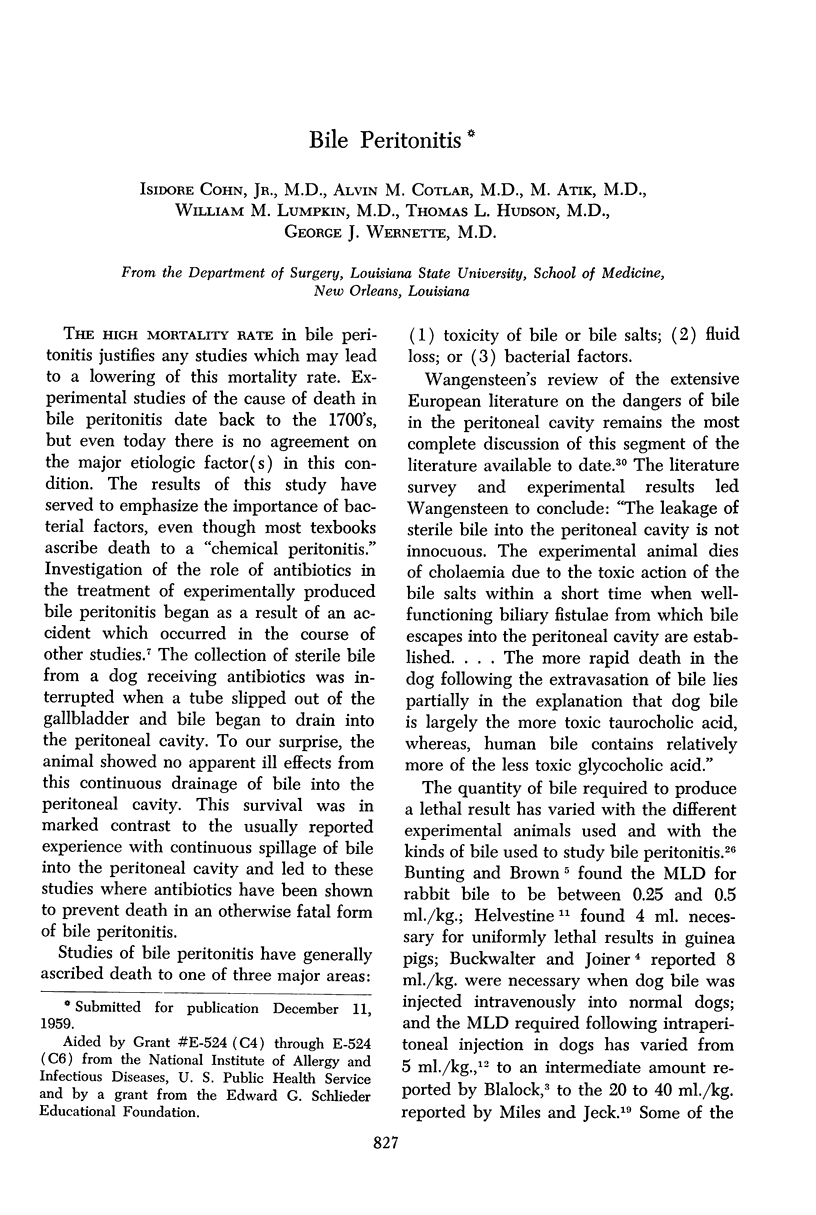
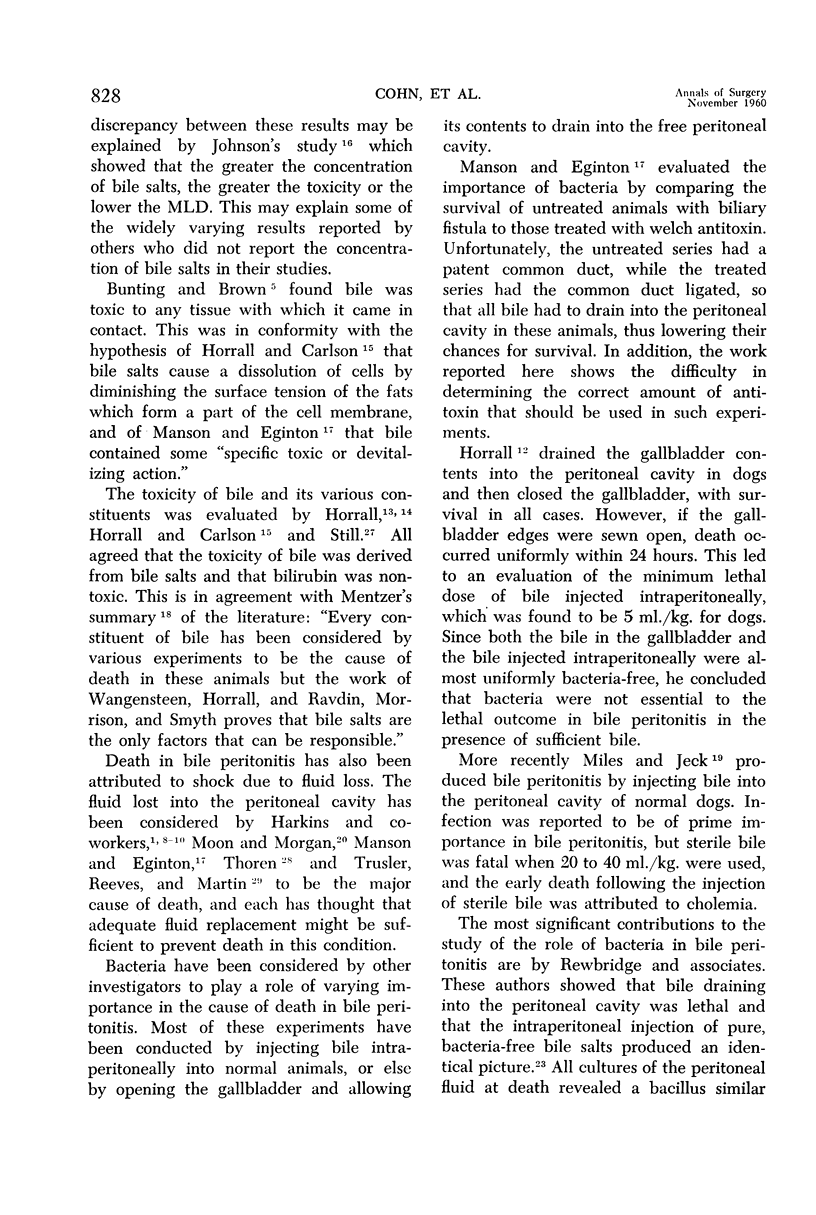
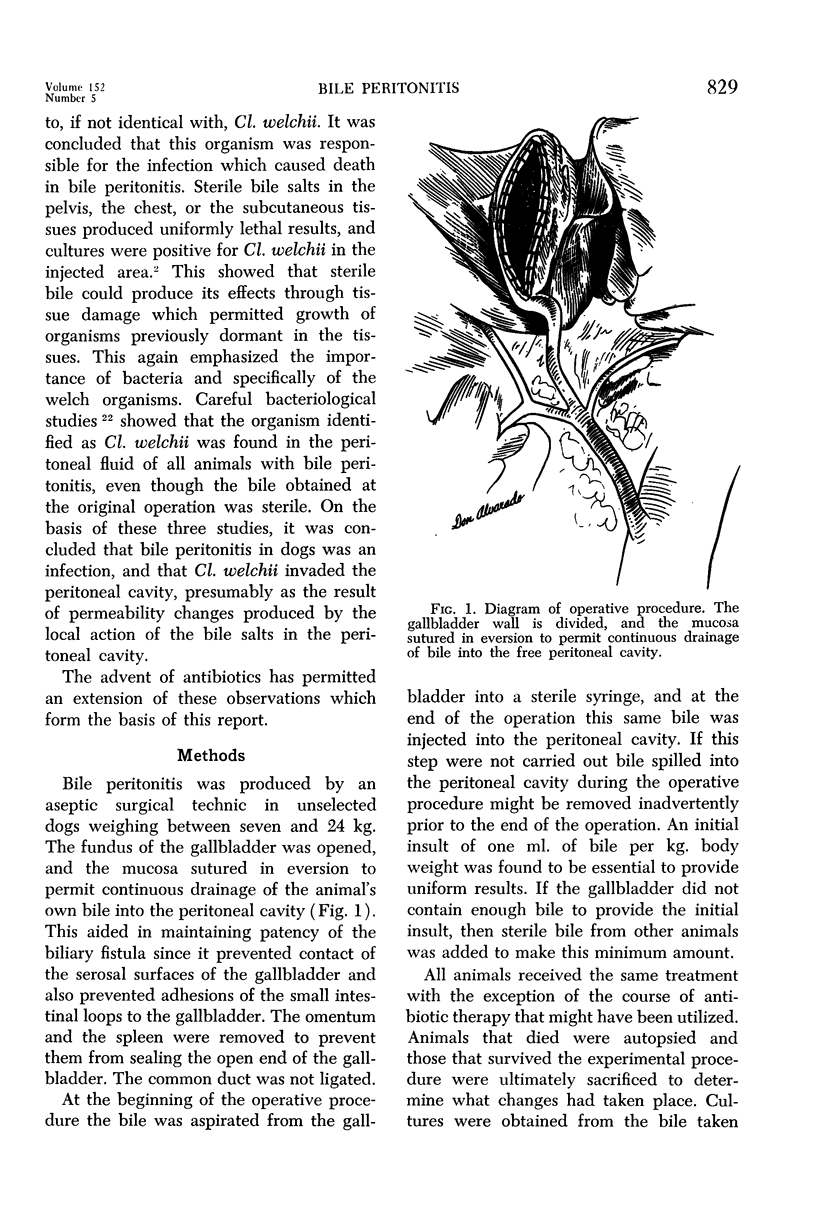
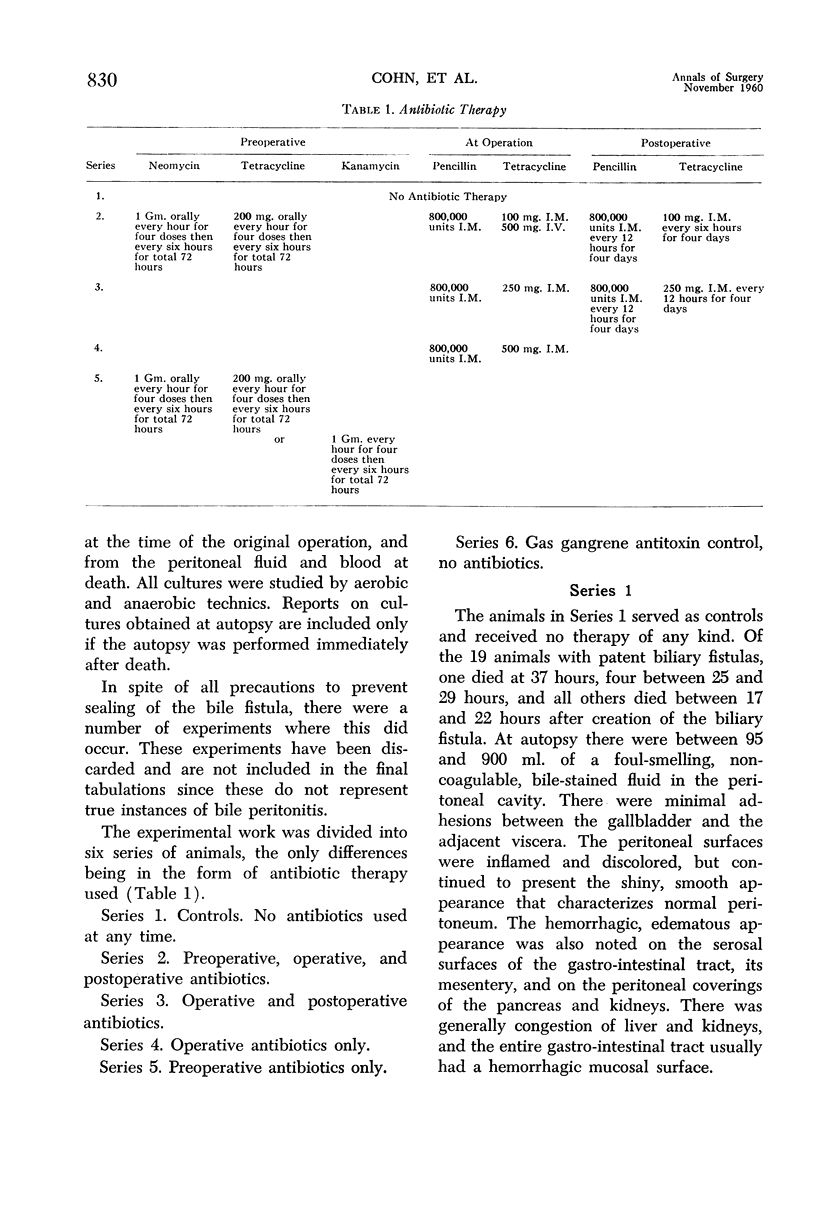
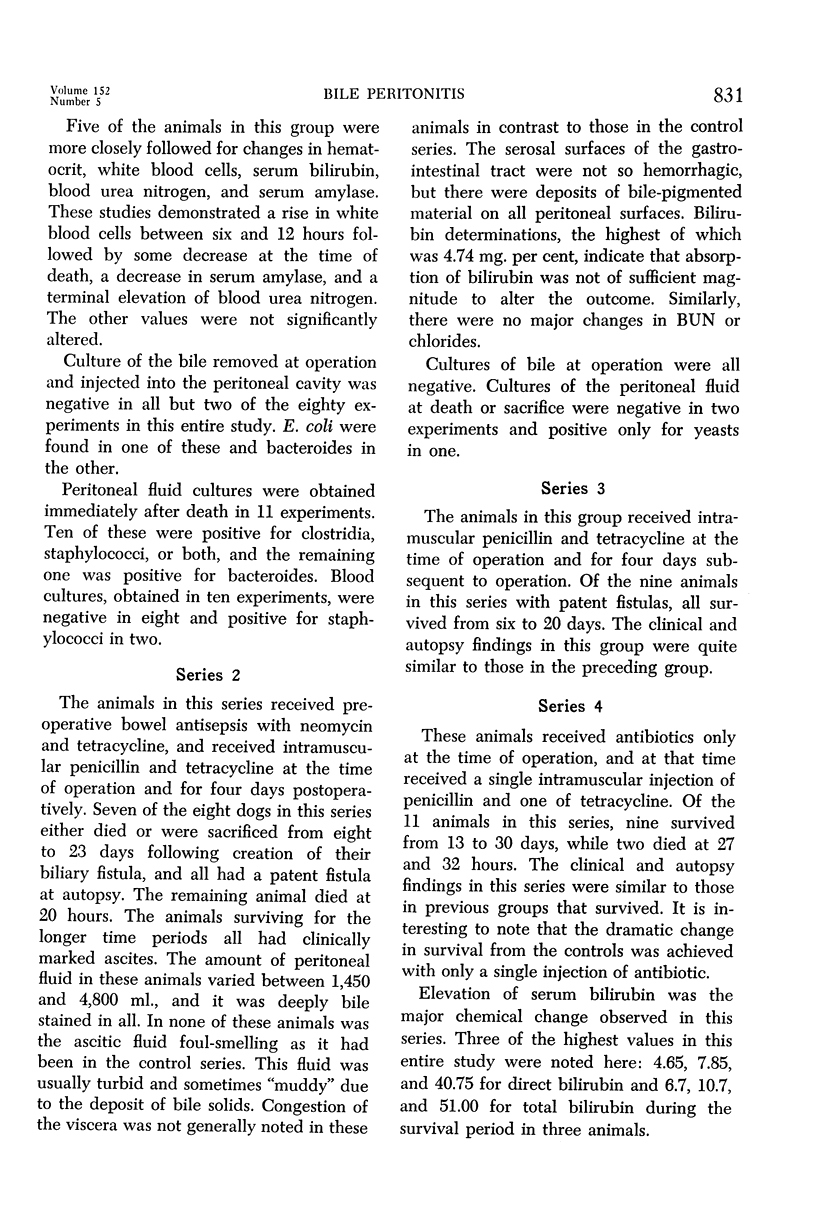
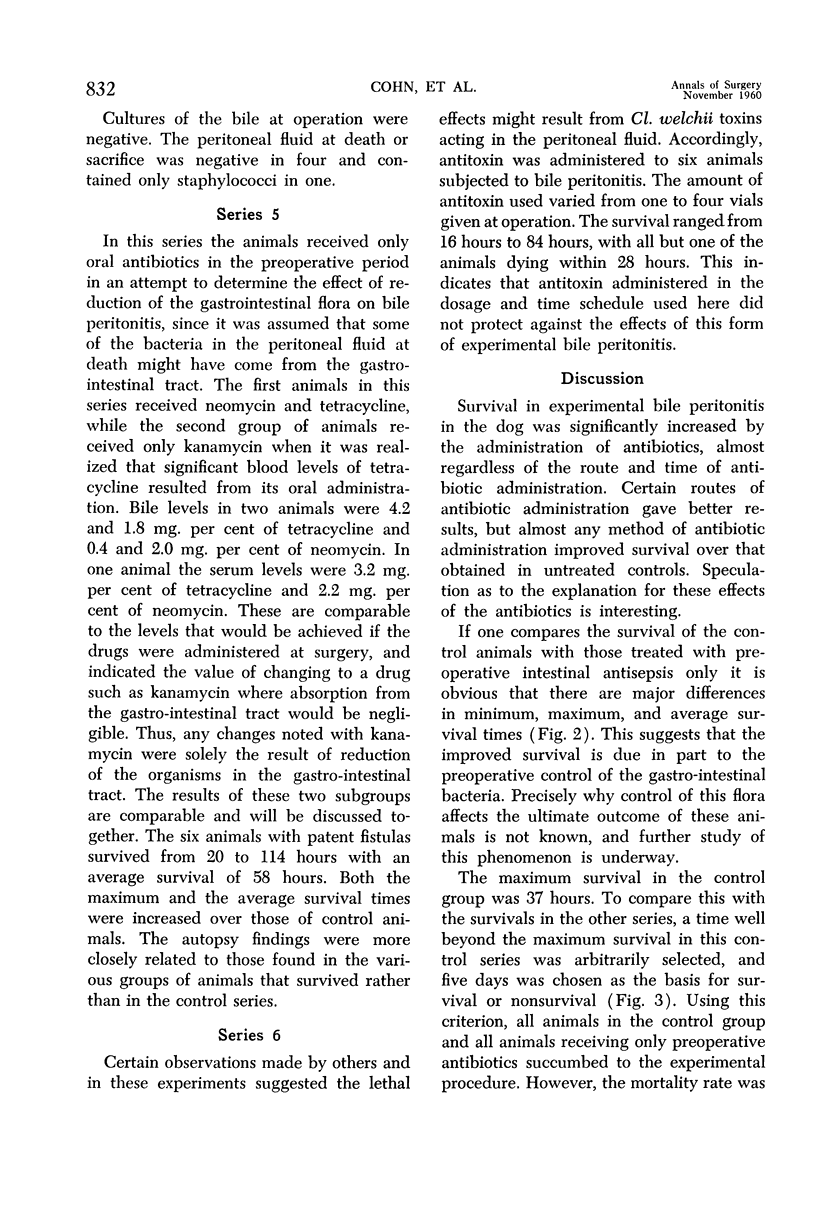
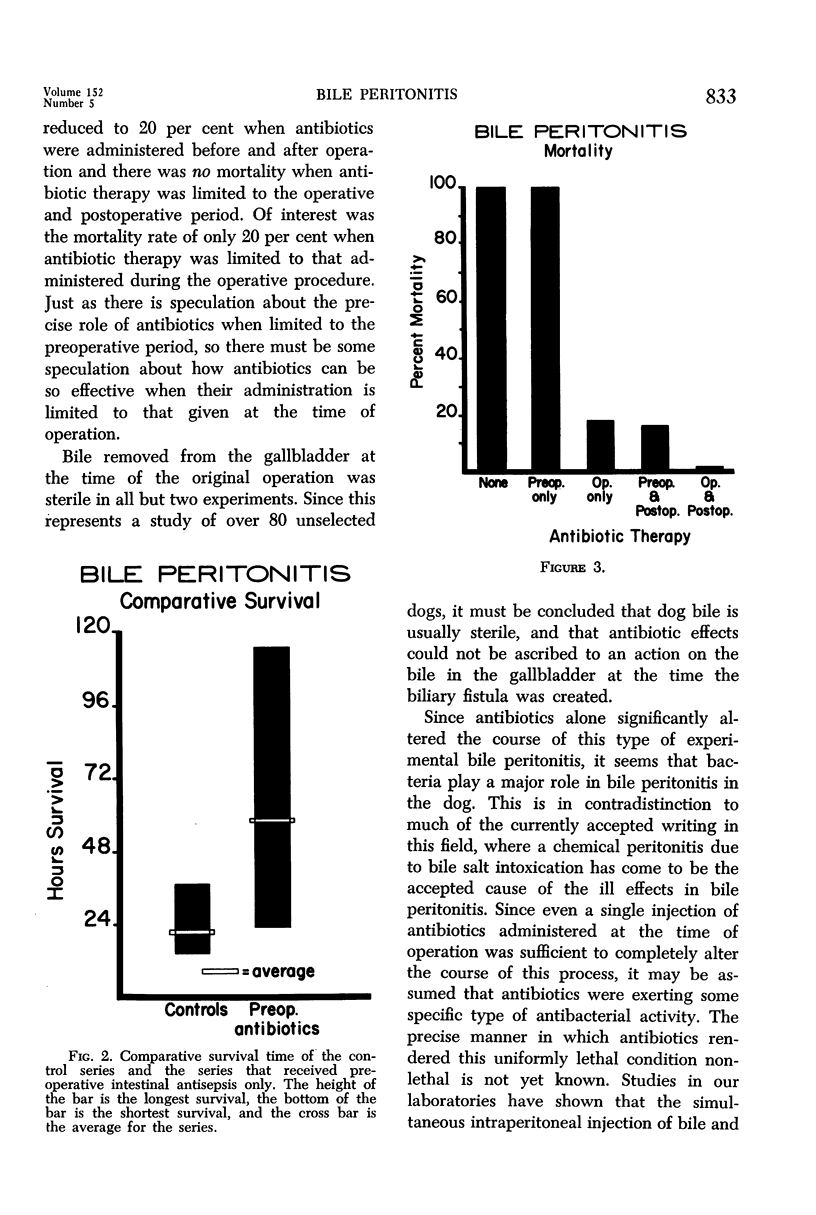


Selected References
These references are in PubMed. This may not be the complete list of references from this article.
- Andrews E., Harkins H. N., Harmon P. H., Hudson J. SHOCK SYNDROME FOLLOWING SUBCUTANEOUS INJECTION OF BILE OR BILE SALTS. Ann Surg. 1937 Mar;105(3):392–400. doi: 10.1097/00000658-193703000-00010. [DOI] [PMC free article] [PubMed] [Google Scholar]
- BUCKWALTER J. A., JOINER B. A. Intravenous autogenous bile in dogs. Surg Forum. 1951:167–172. [PubMed] [Google Scholar]
- COHN I., Jr Collective review: strangulation obstruction. Surg Gynecol Obstet. 1956 Aug;103(2):105–137. [PubMed] [Google Scholar]
- COHN I., Jr, WERNETTE G. J. Technique for collection of sterile bile from experimental animals. AMA Arch Surg. 1957 Dec;75(6):1003–1005. doi: 10.1001/archsurg.1957.01280180135020. [DOI] [PubMed] [Google Scholar]
- JOHNSON J. R. The role of concentration of bile in toxicity. Surg Forum. 1951:184–187. [PubMed] [Google Scholar]
- MILES R. M., JECK H. S. Observations on experimental bile peritonitis. Surgery. 1953 Sep;34(3):445–456. [PubMed] [Google Scholar]
- NORMAN A., GRUBB R. Hydrolysis of conjugated bile acids by Clostridia and enterococci; bile acids and steroids 25. Acta Pathol Microbiol Scand. 1955;36(6):537–547. doi: 10.1111/j.1699-0463.1955.tb04651.x. [DOI] [PubMed] [Google Scholar]
- SCHWEINBURG F. B., SELIGMAN A. M., FINE J. Transmural migration of intestinal bacteria; a study based on the use of radioactive Escherichia coli. N Engl J Med. 1950 May 11;242(19):747–751. doi: 10.1056/NEJM195005112421903. [DOI] [PubMed] [Google Scholar]
- THOREN L. Experimental biliary peritonitis. Acta Chir Scand. 1957 Oct 12;113(6):494–496. [PubMed] [Google Scholar]
- Wangensteen O. H. ON THE SIGNIFICANCE OF THE ESCAPE OF STERILE BILE INTO THE PERITONEAL CAVITY. Ann Surg. 1926 Nov;84(5):691–702. [PMC free article] [PubMed] [Google Scholar]


